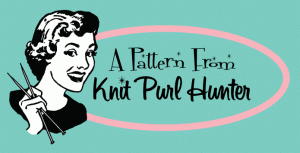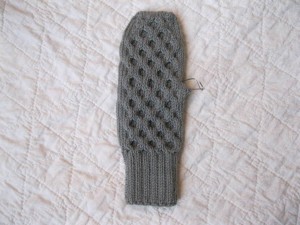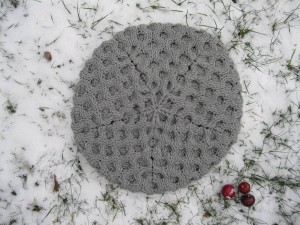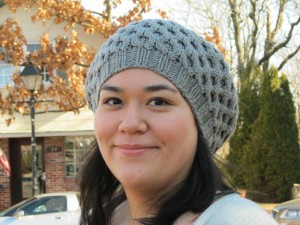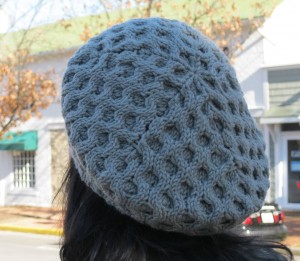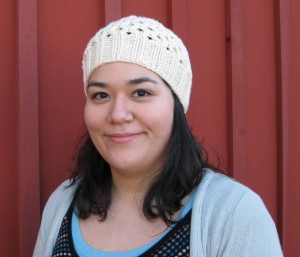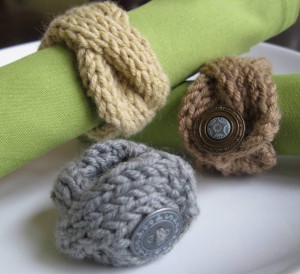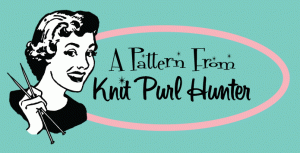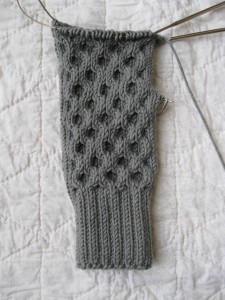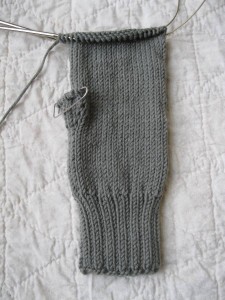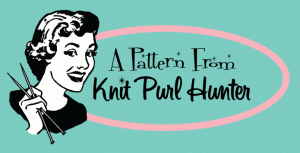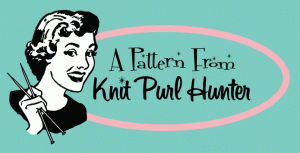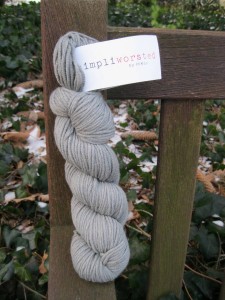With our hand complete, it is time to turn our attention to the thumb. We have created a nice resting place for our thumb with a full-fashioned gusset. A few quick rounds and you can wear your toasty warm beauties.
I have a very popular video to help you, titled “Thumb”, that I created as a generic guide to all thumb knitting. Since many of you are first time mitten knitters, I created a “Winter Buzz Thumb” video that is specific to this pattern. The new video contains the same techniques without the confusion of trying to adapt to a different stitch count. I welcome your feedback as I am always striving to create better videos.
As promised, I have several patterns to help you use any leftover Simpliworsted yarn. At the bottom of this post, I will tease you with a pattern featuring two Winter Buzz hat versions available in the Pattern Store on my website. Also, try the FREE pattern for Classic Cable Napkin Rings that uses leftover Simpliworsted yarn.
Check back tomorrow for a photo of the completed mittens.
Part Four
Click here to download printable version
Thumb – Mitten
Place first 6 stitches from stitch holder onto a double point needle. This will be Needle #1.
Place last 6 stitches from stitch holder onto a second double point needle. This will be Needle #2.
With a third double point needle, pick up one stitch in “ditch” on left side of thumb opening (area between Needle #2 and the backward loop cast on stitches), pick up 2 stitches above thumb opening (former backward loop cast on stitches), and one stitch in “ditch” on right side of thumb opening (area between the backward loop cast on stitches and Needle #1). There are 4 stitches on Needle #3 for a total of 16 thumb stitches.
Beginning round at Needle #1, join yarn leaving a 12” tail.
Knit 12, (k2tog) twice. 14 thumb stitches.
Knit all 14 stitches until thumb reaches halfway up thumbnail.
Decrease thumb as follows:
*k2tog, k1; repeat from * to last 2 stitches, k2tog. (9 stitches)
*k2tog; repeat from * to last stitch, k1. (5 stitches)
Break yarn and thread through loop and pull tight to close.
Weave in ends using thumb tail to close any remaining gaps in thumb gusset.
Thumb – Fingerless Mitt
Work same as Mitten Thumb, except ending when thumb reaches halfway up thumb or to desired length. Do not decrease.
Bind off loosely.
Weave in ends using thumb tail to close any remaining gaps in thumb gusset.
Cool Hands = Warm Heart
Warm Mittens = Cool Knitting Chick
©2012 Michelle Hunter
Winter Buzz Hats
Pattern includes two versions knit with Simpliworsted – Slouchy and Watch Cap. Slouchy version uses approximately 140g and Watch Cap version uses approximately 90g. See the Pattern Store for details.
Classic Cable Napkin Rings
Turn your leftover yarn into a chic table accessory. Download your FREE pattern today!
KAL continues on February 2nd!
Join us next month as the Progressive Needles KAL continues with two-color sock knitting in Disappearing Act. This toe up pattern features great techniques and a heel new to the series. Disappearing Act uses two skeins of Royal sock yarn – one for the main color and one for the contrasting color. Pair your favorite colors and let the fun begin. Sample was knit on US#1 (2.5mm) needles with a gauge of 8.5 stitches = 1 inch in stockinette.

